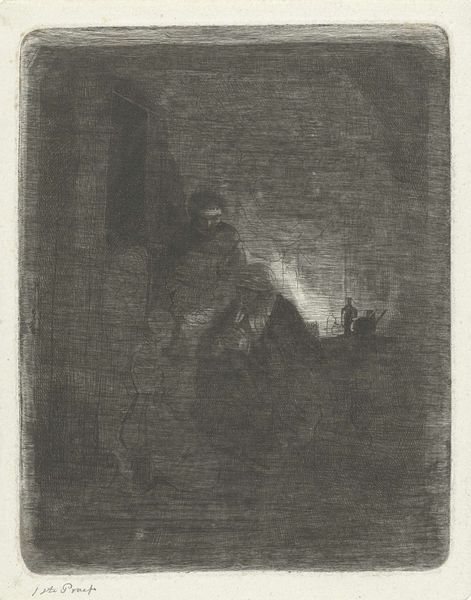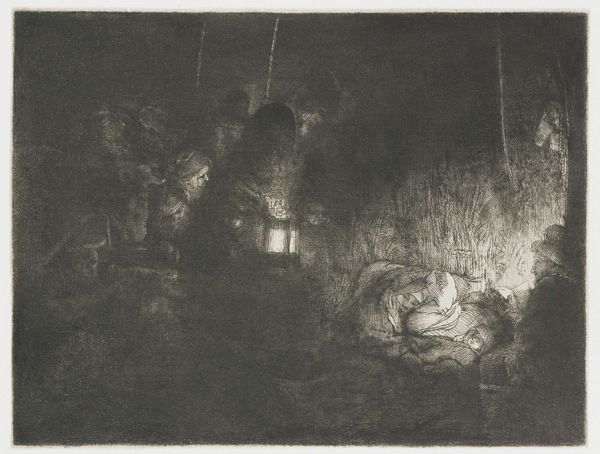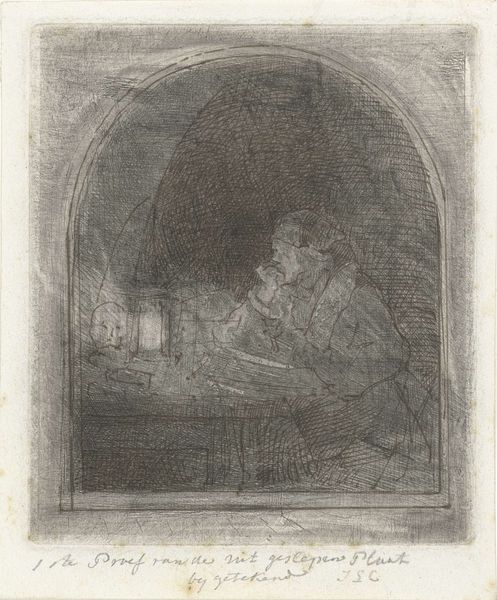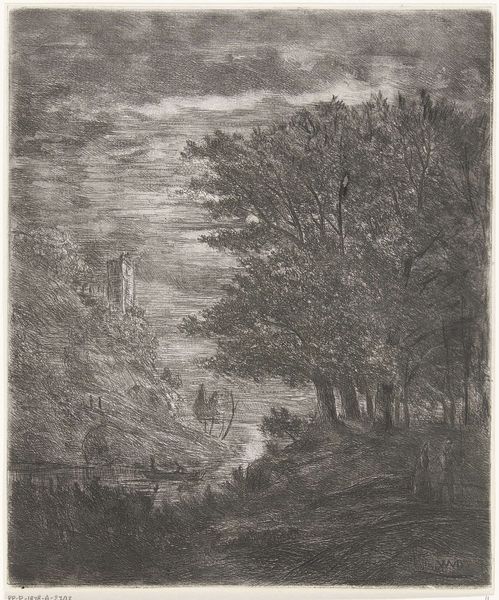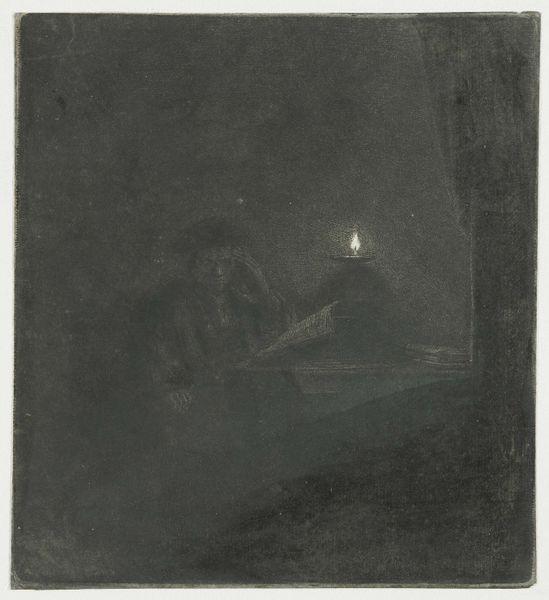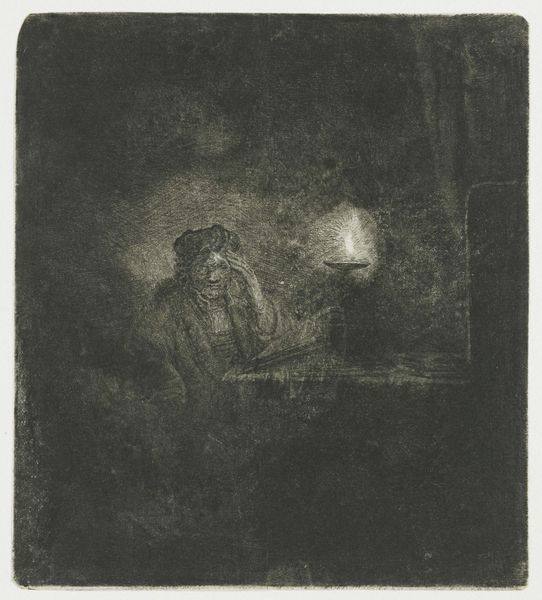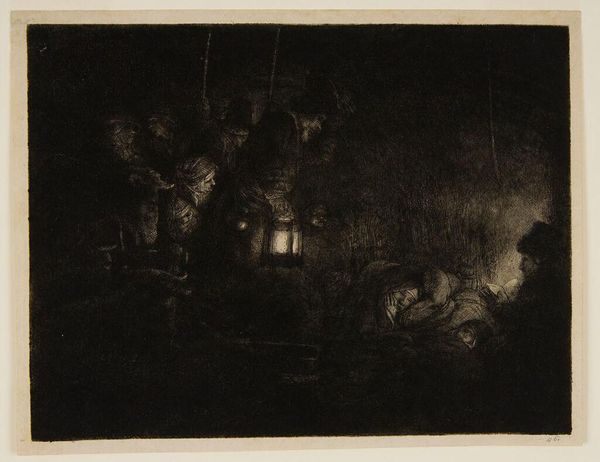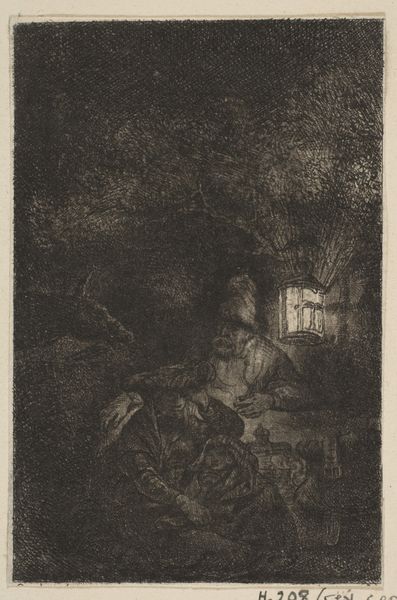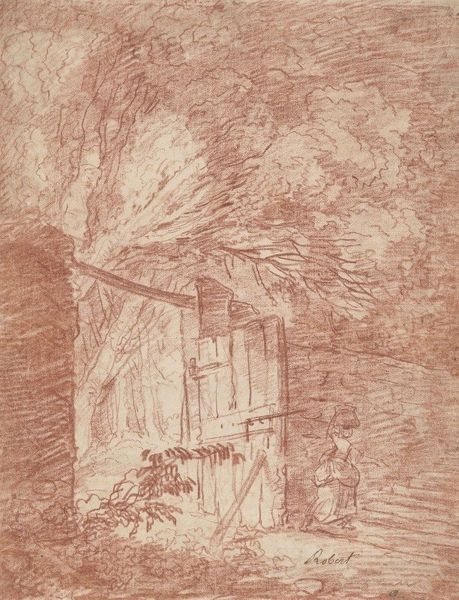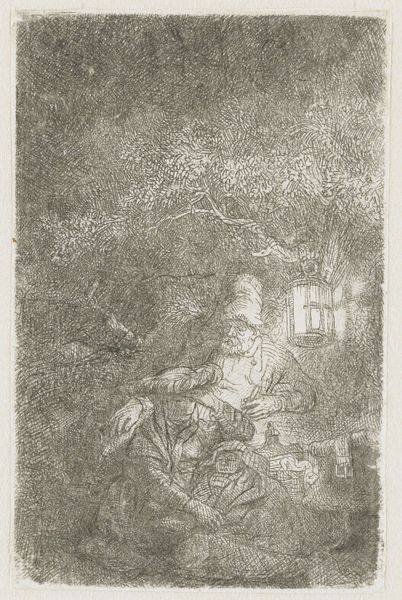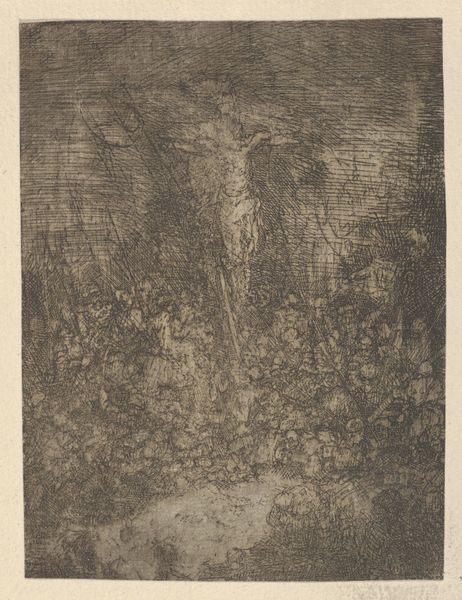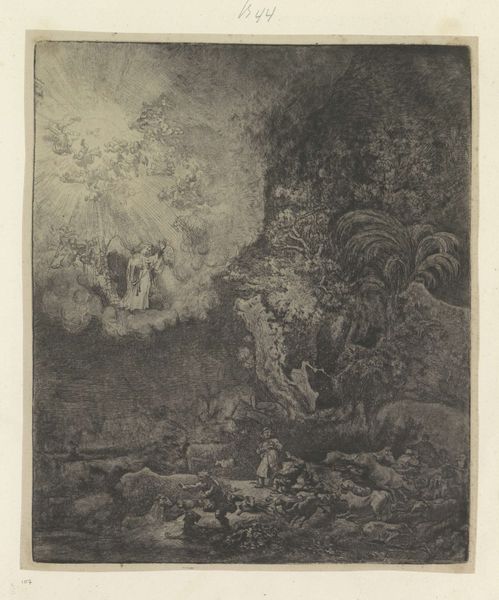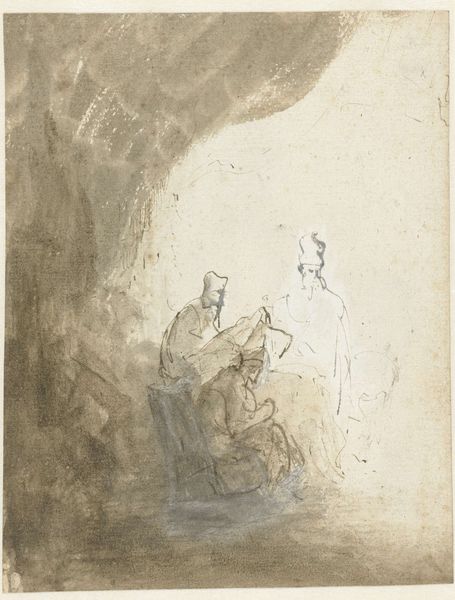
drawing, print, etching, ink, pencil
#
pencil drawn
#
drawing
#
narrative-art
# print
#
impressionism
#
etching
#
charcoal drawing
#
ink
#
pencil drawing
#
pencil
#
cityscape
#
genre-painting
#
charcoal
Dimensions: height 386 mm, width 228 mm
Copyright: Rijks Museum: Open Domain
Curator: What an evocative atmosphere Buhot conjures in this print, "Samenscholing bij avond voor een kathedraal"—Gathering at Evening in Front of a Cathedral. Dating from between 1857 and 1898 and held at the Rijksmuseum. It’s a mixed-method print using etching, drypoint, and aquatint. What do you make of it? Editor: Bleak. Utterly, masterfully bleak. The tonal range is compressed, dominated by a narrow band of greys, enhancing the sombre mood. Curator: Yes, the restrained palette absolutely shapes our experience. I'm immediately drawn to the cathedral itself. Despite the darkness, it still looms—a symbol of stability and faith, even on this dark night. Cathedrals represented spiritual aspiration but they often dominate the urban poor. Editor: I see that contrast, but it is less the weight of spiritual promise, and more an imposing structure delineated by tonal modulations – an architectural mass asserting its dominance over the composition, its bulk softened, or rather blurred, by Buhot's atmospheric rendering. The visible light through its main doorway stands in contrast with the man on the side struggling with the bright torch to illuminate the building or is he lighting the steps to call them? Curator: Precisely, the torch lighting may hint at a narrative of enlightenment—or, perhaps more cynically, highlighting the division between those inside, bathed in the cathedral's light, and the common man who can merely throw light into that direction but it still is on the fringes. We might note a figure on the side away from the viewer but still in close proximity. There might be social commentary on who enters those holy portals, what kind of souls those are. Editor: From a compositional viewpoint, it cleverly positions us—the viewers—as observers on the margins as well. Curator: This technique heightens the viewers own connection with the art's overall story, in a similar psychological process as other late 19th century city scenes—showing empathy for our brothers through artistic observation. Editor: Indeed, the artist creates a sense of removed observation and through structural elements. The figures at the front almost dissolving in front of us. Curator: This art piece stands at the juncture of visual representation, society, and cultural meaning! Editor: Agreed. What appears, at first glance, as a depressing city scene is revealed to be, on the other hand, a very thoughtful composition.
Comments
No comments
Be the first to comment and join the conversation on the ultimate creative platform.
